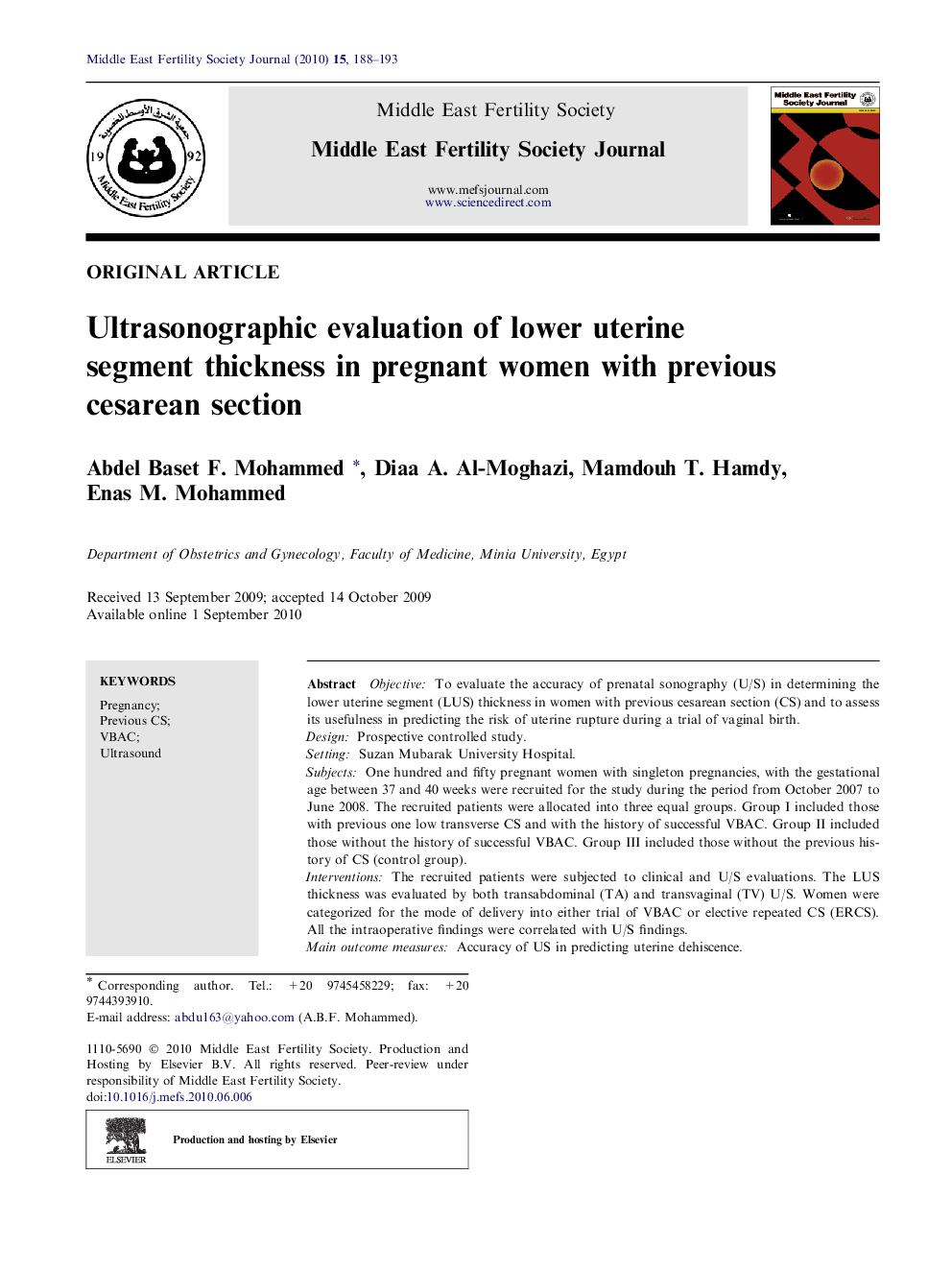| Article ID | Journal | Published Year | Pages | File Type |
|---|---|---|---|---|
| 3966420 | Middle East Fertility Society Journal | 2010 | 6 Pages |
ObjectiveTo evaluate the accuracy of prenatal sonography (U/S) in determining the lower uterine segment (LUS) thickness in women with previous cesarean section (CS) and to assess its usefulness in predicting the risk of uterine rupture during a trial of vaginal birth.DesignProspective controlled study.SettingSuzan Mubarak University Hospital.SubjectsOne hundred and fifty pregnant women with singleton pregnancies, with the gestational age between 37 and 40weeks were recruited for the study during the period from October 2007 to June 2008. The recruited patients were allocated into three equal groups. Group I included those with previous one low transverse CS and with the history of successful VBAC. Group II included those without the history of successful VBAC. Group III included those without the previous history of CS (control group).InterventionsThe recruited patients were subjected to clinical and U/S evaluations. The LUS thickness was evaluated by both transabdominal (TA) and transvaginal (TV) U/S. Women were categorized for the mode of delivery into either trial of VBAC or elective repeated CS (ERCS). All the intraoperative findings were correlated with U/S findings.Main outcome measuresAccuracy of US in predicting uterine dehiscence.ResultsMean LUS thickness was lower among the study groups than in the control group. The present study reported 14 (28%) cases of dehiscent scar. Mean LUS thickness was significantly lower among the dehiscence groups (1.7±0.7mm) than in the non-dehiscence groups (2.6±0.8mm) (P⩽0.01). At a cutoff value of 2.5mm, the sensitivity, specificity, and positive and negative predictive values were 90.9%, 84%, 71.4%, and 95.5%, respectively, using (TA) U/S and 81.8%, 84%, 69.2%, and 91.3%, respectively, using (TV) U/S. At LUS thickness ⩽2.5mm, there was a higher risk for dehiscence than those with a thickness of more than 2.5mm.ConclusionsIf the thickness of the LUS is more than 2.5mm, the possibility of dehiscence during the subsequent trials of labor is very small and a safe vaginal delivery can be achieved. Further large studies are recommended.
